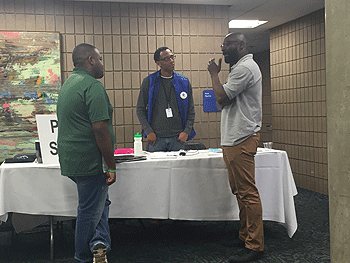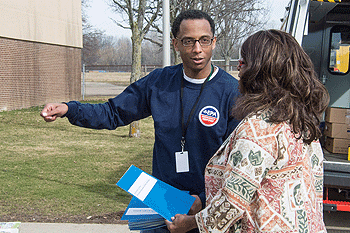Protecting Drinking Water by Becoming Climate Ready
By Joel Beauvais and Andrew Kricun, Executive Director for the Camden County (NJ) Municipal Utilities Authority
From Portsmouth, New Hampshire to Homer, Alaska, drinking water and wastewater utilities across the country are working with EPA to prepare for climate change. These forward-thinking utilities are following the science that shows climate change brings increased water shortages in some parts of the country, while other areas grapple with increased stormwater runoff, flooding, and sea level rise. These utilities and their surrounding communities know that these climate impacts will continue to exacerbate existing challenges to the country’s aging water infrastructure.
This is a public health challenge that affects both the quantity and quality of our drinking water and the integrity of the infrastructure we rely on to deliver and treat water.
To meet these challenges, EPA has developed a number of tools to help utilities understand climate science and adaptation options under the Climate Ready Water Utilities initiative. We have released two new tools that promote water utility preparedness and resilience—an adaptation information exchange which offers utilities a platform to share best practices and lessons learned, and an adaptation workshop planner helps users conduct successful climate change adaptation workshops, generating materials tailored to the needs of water sector stakeholders and their communities.
The Climate Ready Water Utilities initiative also highlights the good work water utilities like the Camden County Municipal Utilities Authority (CCMUA) are doing to ensure the long-term viability of their operations. Faced with a projected rise in river levels and an increase in the magnitude and frequency of intense precipitation and flooding, CCMUA has implemented a number of adaptation measures, using CRWU resources like the Climate Resilience Evaluation and Awareness Tool (CREAT) that will help guarantee the sustainability of its wastewater services.
By integrating water conservation and green infrastructure adaptive measures into its infrastructure investment plan, CCMUA is minimizing costs, reducing energy consumption, increasing the resiliency of its operations and protecting public health and the Delaware River from combined sewage flooding and overflows. Also, CCMUA is already saving nearly $600,000 per year in electricity costs and is expected to save close to $2 million per year in electricity costs when green energy projects are completed.
Other utilities are encouraged to follow in the footsteps of CCMUA by leveraging the tools and resources offered through the Climate Ready Water Utilities initiative. By fostering collaboration and greater awareness of a changing climate future, EPA and CCMUA are working to ensure that the water sector can make better informed investment decisions today.
To learn more about Camden’s use of EPA’s Climate Ready Water Utilities tools watch this video: https://youtu.be/_w9Omq3ZMQg






